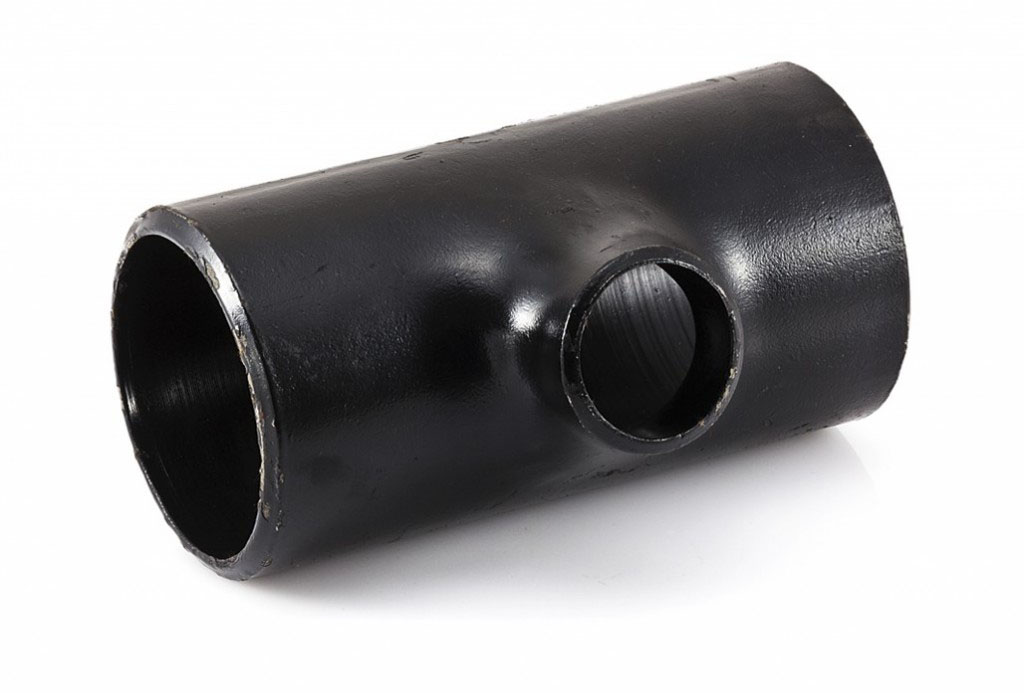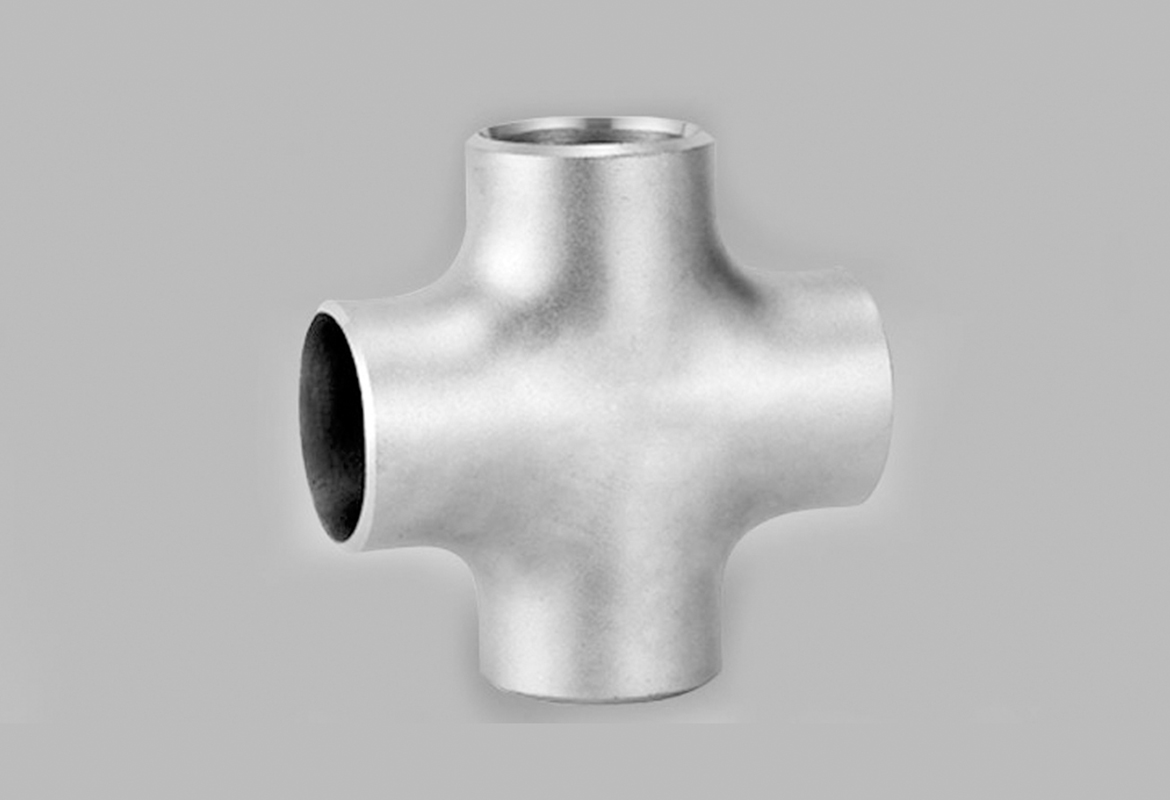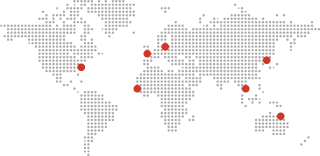Alın Kaynaklı Boru Tee

Çelik boru tişörtü, ana boru hattında bir branşman olduğunda kullanılan en yaygın parçadır.. Branşın boyutu başlık borusuyla aynı olduğunda eşit T-parçası kullanılır. Dal boyutu başlık boyutundan küçük olduğunda eşit olmayan tee kullanılır. Şu anda, dikişsiz borudan yapılmış çelik tişört üretiminde hidroforming ve sıcak pres şekillendirme kullanılır. Çelik boru T parçası, iki fazlı sıvı karışımlarını taşımak için ağlardaki boru hatlarını bağlamak için kullanılır. Fümigasyon gerektirmeyen kutularda veya ahşap tutucularda saklanabilir..
Firmamız 1/2 gibi farklı boyutlarda çelik boru teleri sağlamaktadır.″ ve 24″, DN15 ve DN600 dikişsiz bağlantı parçaları, 4″ ve 24″, DN100 ve DN600 kaynak bağlantı parçaları veya 12″ ve 78″, DN300 ve DN1900 alın kaynak bağlantı parçaları. Farklı duvar kalınlıkları da vardır. Çelik boru T parçasının maksimum duvar kalınlığı 150 mm ve diğer program numaraları sch10'dur, Sch20, Sch30, std, Sch40, Sch60, xs, Sch80, Sch100, Sch120, sch140, sch160, xx'ler, sch5'ler, sch20'ler, sch40'lar ve sch80'ler.
Çelik Boru Tee'nin Özellikleri
| Tip | |||
| Dikişsiz Tişört | Kaynak Tişörtü | Alın Kaynak Tee | |
| Dış Çap | 1/2″ ~ 24″ | 4″ ~ 24″ | 12″ ~ 78″ |
| Duvar kalınlığı | 3 mm~ 200 mm | ||
| Ürün türü | Eşit tişört ve eşit olmayan tişört | ||
Boru Tee Stili:
Boru T parçası, akışkanın çalışma borusundan dağıtılması veya toplanması için kullanılır. Merkezinde 90 derecelik bir dal bulunan kısa bir boru parçasıdır. Borularda kullanılan iki tip Tee vardır, Eşit / Düz Tee ve Azaltma / Eşitsiz Tee.
Düz Tee
Düz tişörtlü, dalın çapı Koşunun çapıyla aynıdır (Başlık) Boru.
Tee'nin Azaltılması
Tee'yi azaltmada, dal boyutunun çapı Koşunun çapından daha küçüktür (Başlık) Boru
Çubuklu Tişört
Sıyırıcı T olarak da bilinen çubuklu bir T, pigli boru hatlarında kullanılır.. Tişörtün kolu, domuzun veya kazıyıcının dala girmesini önlemek için dahili olarak kaynaklanmış bir sınırlama çubuğuna sahiptir. Çubuklar, pik'in çalışma borusundan kısıtlamasız geçişine izin verecek şekilde branşmana kaynaklanmıştır..



Boru T Malzemeleri
Ek olarak, Boru teemiz farklı malzemelerden yapılabilir ve detaylı bilgi burada listelenmiştir.
Karbon Çelik: ASTM/ASME A234 WPB、WPC
Alaşımlı Çelik: ASTM/ASME A234 WP 1-WP 12-WP 11-WP 22-WP 5-WP 91-WP 911
Paslanmaz çelik: ASTM/ASME A403 WP 304-304L-304H-304LN-304N, ASTM/ASME A403 WP 316-316L-316H-316LN-316N-316Ti, ASTM/ASME A403 WP 321-321H ASTM/ASME A403 WP 347-347H
Düşük Sıcaklık Çeliği: ASTM/ASME A402 WPL 3-WPL 6
Yüksek Performanslı Çelik: ASTM/ASME A860 WPHY 42-46-52-60-65-70
TEES düz ve azaltıcı
Tee'nin temel amacı borunun ana hattından 90°'lik bir dal oluşturmaktır.. Standart var 2 olasılıklar, eşit T ve azaltıcı T adına. Eşit tişört (veya düz tişört) dal, çalışma borusuyla aynı çapa sahip olduğundan kullanılır. Dalın çalışma borusundan daha küçük bir çapa sahip olması nedeniyle indirgeyici T parçası kullanılır.

Boyutlar ve Standartlar
Bir tişört NPS hakkında konuştuğumuzda 3, eşit veya düz bir tişört tasarlanmıştır. Tişörtlü NPS 3 X 2 azaltıcı bir tişört tasarlanmıştır. Rağmen, resmi olarak azaltıcı bir tişört şu şekilde belirtilecektir: 3 çaplar, yani 3 X 3 X 2 (AxBxC). A ve B ölçüsü, Çalışma Borusunun Nominal Boru Boyutunu ifade eder, C ölçüsü Çıkışın Nominal Boru Boyutu anlamına gelir.
Bu tanımlama aslında gereksiz, ama tişörtlerin mevcut olduğu zamandan geliyor 3 çapların farklı uçları, örneğin
4 X 3 X 2 (AxBxC). Bu uygulamada elbette gerekli, belirtmek 3 farklı boyutlar.
Bu tür tişörtler muhtemelen artık mevcut değil. Eşmerkezli veya eksantrik redüktörle eşit bir T parçası uygulamak artık olağan uygulamadır.
Tüm yaygın çaplar için düz veya eşit alın kaynaklı Tee mevcuttur.
İndirgeyici Tee değil, çünkü birçok çap üretilmiyor, veya üretilemez.
Örnek olarak: azaltıcı tee NPS 6 X 4 çoğu tedarikçi için standart bir üründür, ancak azaltıcı bir tee NPS 16 X 2 muhtemelen herhangi bir tedarikçi tarafından mevcut değildir.
NPS kullanmak da ekonomik olmaz 16 NPS'li tişört 2 çıkış; bu gibi durumlarda Branşman Bağlantısı kullanılacak veya Branş Bağlantısı yapılacaktır..
Tanımlanan te'lere ek olarak, düz ve azaltıcı haçlar var.
Düz haçlar genellikle stok kalemleridir, azaltıcı haçların elde edilmesi genellikle zordur.
Bu tişörtü hiç kullanmadım ve pratikte hiç görmedim, en azından petro ve kimya endüstrisinde değil. Alanın sınırlı olduğu yerlerde kullanılacaklar, revizyon çalışmasıyla, denizcilik endüstrisinde vb..
Duvar kalınlığı Tee
Tişört şeklinde, duvar kalınlığı kritik bir öğe olabilir. ASME B16.9 yalnızca uçtan uca boyutları standartlaştırır, merkezden uca boyutlar ve bazı “karelik” boyutsal toleranslar.
Kaynak hattı konumundaki duvar kalınlığı bile standartlaştırılmıştır, ancak bağlantı parçasının geri kalanı boyunca değil. Standart, minimum toleransın şu sınırlar içinde olacağını belirtmektedir: 12.5% Borunun minimum sipariş edilen duvar kalınlığı. Maksimum tolerans yalnızca bağlantı parçasının uçlarında belirtilir.
Birçok kaynak tee sağlayıcısı (ve dirsekler) Yeterli duvar kalınlığı için bir program daha fazla kalınlık sağlayın, oluşturduktan sonra, kalıntılar. Tee'de, kasık yarıçapı (T) bir üreticiden diğerine değişir, ama bazıları kendini bir gereklilik olarak kabul ettiriyor, 1.3 kasıkları korumak için duvar kalınlığının katı.
BOYUT TOLERANSLARI DÜZ TİŞÖRTLER ASME B16.9
| Nominal Boru Boyutu | 1/2 ile 2.1/2 | 3 ile 3.1/2 | 4 | 5 ile 8 | 10 ile 18 | 20 ile 24 | 26 ile 30 | 32 ile 48 |
| Dış Çap Eğimde (D) |
+1.6 -0.8 |
1.6 | 1.6 | +2.4 -1.6 |
+4 -3.2 |
+6.4 -4.8 |
+6.4 -4.8 |
+6.4 -4.8 |
| Sonunda İç Çap | 0.8 | 1.6 | 1.6 | 1.6 | 3.2 | 4.8 | +6.4 -4.8 |
+6.4 -4.8 |
| Merkezden Sona (C / M) | 2 | 2 | 2 | 2 | 2 | 2 | 3 | 5 |
| Duvar Kalınlığı (T) | Daha az değil 87.5% Nominal Duvar Kalınlığı | |||||||
Boyutsal toleranslar, aksi belirtilmedikçe milimetre cinsindendir ve belirtilenler dışında eşittir ±.







